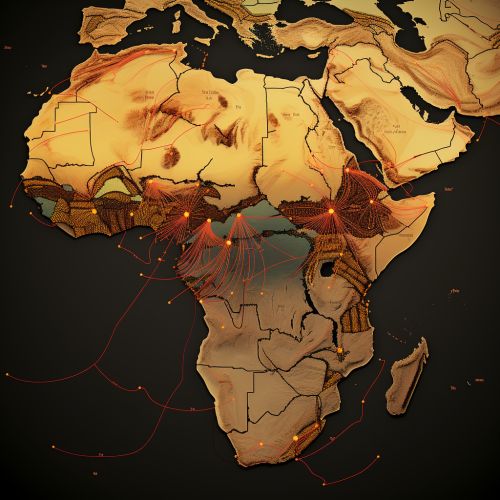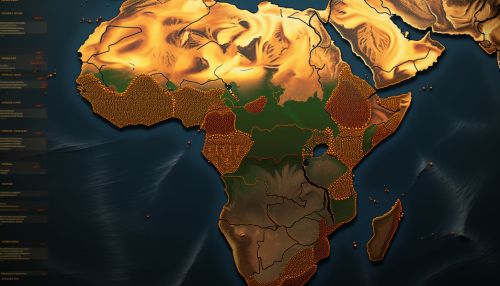Bantu languages
Introduction
The Bantu languages are a large family of languages spoken by the Bantu peoples throughout Sub-Saharan Africa. As a branch of the larger Niger-Congo language family, the Bantu languages boast over 535 different languages and dialects, spoken by more than 240 million people in total. The term 'Bantu' itself, meaning 'people' or 'humans', originates from the proto-Bantu language from which all these languages are descended.


History and Origins
The Bantu languages are believed to have originated from the Niger-Congo language family, specifically from the Benue-Congo branch. The proto-Bantu language, from which all Bantu languages are descended, is thought to have been spoken in the region that is now Cameroon and Nigeria around 4,000 to 3,000 years ago. From here, Bantu-speaking peoples began a series of migrations, known as the Bantu expansion, spreading their languages across a vast swathe of the African continent.
Classification
The Bantu languages are classified into several major branches, each containing numerous individual languages and dialects. These branches include the Central Bantu languages, the Eastern Bantu languages, the Western Bantu languages, and the Southern Bantu languages. Each of these branches is further subdivided into numerous smaller groups and individual languages.
Phonology
Bantu languages are known for their complex phonological systems, featuring a wide range of consonants, vowels, and tones. Most Bantu languages have at least five vowels, and many have more. Consonants in Bantu languages can be plain, aspirated, or prenasalized, and many languages also have a series of clicks. Tone is used in most Bantu languages to distinguish meaning, with each language having a different number and type of tones.
Grammar
The grammar of Bantu languages is characterized by a complex system of noun classes, similar to gender in many Indo-European languages. Each noun belongs to one of up to 22 noun classes, each of which has its own set of agreement markers that must be used with verbs, adjectives, and other parts of speech. Bantu languages also feature extensive use of verb extensions, which modify the meaning of the verb root in various ways.
Vocabulary
The vocabulary of Bantu languages is diverse, reflecting the wide range of cultures and environments in which these languages are spoken. Many Bantu languages have borrowed words from other languages they have come into contact with, including Arabic, Portuguese, and English. However, the core vocabulary of Bantu languages, including words for family members, body parts, and basic actions, is remarkably consistent across the family, reflecting their common origin.
Writing Systems
Bantu languages have been written using a variety of scripts over the centuries. The earliest Bantu inscriptions were written in the Ge'ez script, while later texts used Arabic and Latin scripts. Today, most Bantu languages are written using the Latin script, although some, like Swahili, also use the Arabic script.
Sociolinguistics
Bantu languages play a crucial role in the societies in which they are spoken. They are used in a wide range of social contexts, from everyday conversation to religious rituals and political speeches. Many Bantu languages also have a significant presence in literature, music, and media.
See Also
Niger-Congo languages Bantu expansion Swahili language
